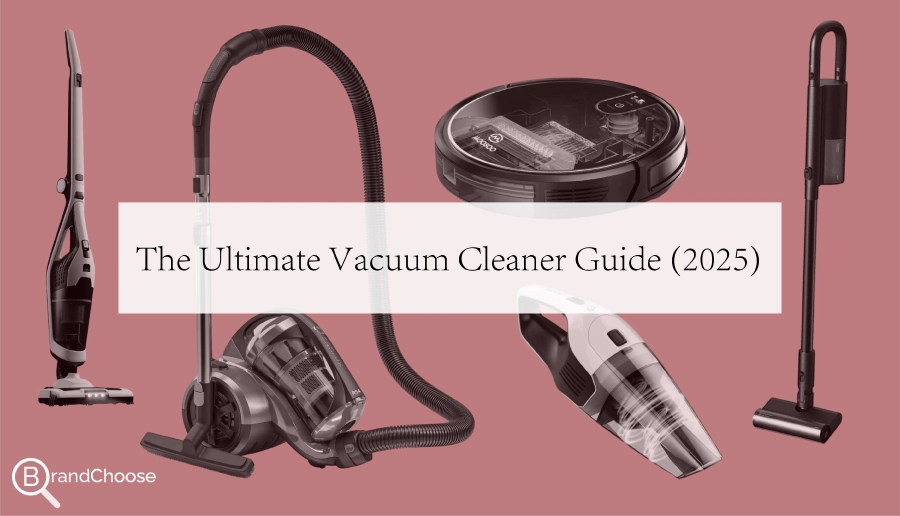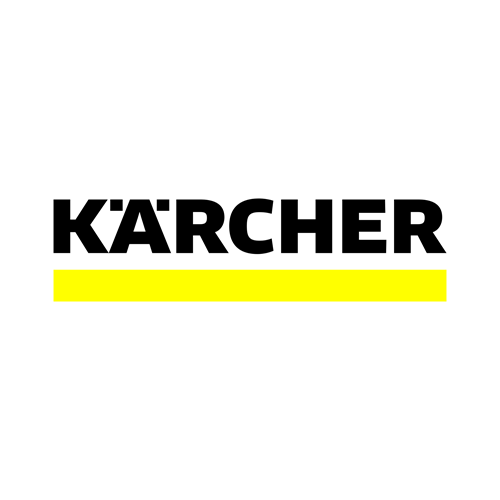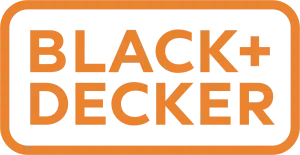Top Vacuum Cleaners Brands Based In germany Brands
Here's what we recommend for:
Affordability
4.2/5
Sebo isn’t cheap upfront, but it’s one of the best long-term values if you're looking for a serious cleaning tool. It’s not about bells and whistles—it’s about performance, reliability, and air health. For users tired of replacing vacuums every 2–3 years, Sebo is a game-changing upgrade worth every penny.
Build Quality & Durability
5/5
This is Sebo’s biggest flex. These vacuums are made in Germany with premium-grade plastics, motors, and internal components. They’re designed for 10+ years of use, and many last well beyond that in both home and commercial settings. Everything is modular and repairable, and the brand has a strong reputation for after-sales support and long-term parts availability.
Products Variety
4/5
Sebo focuses strictly on uprights and canister vacuums—no cordless sticks or robotic gadgets here. But within those categories, they offer lots of flexibility: telescopic wands, interchangeable nozzles, long hoses, and extra-large bags (up to 1.5 gallons). It’s a brand designed to cover whole homes efficiently, especially large or high-traffic spaces.
Usability & Maintenance
4/5
Sebo uprights are a bit heavier than sticks but extremely well-balanced and easy to maneuver. The low-profile heads glide under furniture, and the canister models roll smoothly with large swivel wheels. Maintenance is minimal thanks to high-capacity bags, filter life indicators, and clog-resistant air paths. Noise levels are moderate but not disruptive—refined more than roaring.

S-Class Filtration System – Traps 99.97% of allergens with HEPA-level results

Clog & Brush Jam Indicators – Mechanical self-protection for long motor life

Extra-Large Dust Bags – Holds more, changes less

Hospital-Level Allergen Sealing – Perfect for asthma-sensitive users

Commercial-Grade Build – Designed for homes and professional environments
Affordability
3.7/5
While Kärcher vacuums may sit at a higher price point, they are built for industrial-grade performance, making them a great investment for homes that need consistent, heavy-duty cleaning. You’re getting excellent value for power, durability, and longevity, though they may not be the best option for budget buyers.
Build Quality & Durability
5/5
Kärcher vacuums are known for their rugged construction, designed to last even in tough conditions. The materials used are high-grade and made to withstand heavy-duty cleaning tasks. Expect reliable performance over several years, especially with minimal maintenance.
Products Variety
3.9/5
They offer upright and canister models in their vacuum range. The canisters come with large dustbin capacities, making them suitable for big cleanups. Their cordless models provide additional versatility for smaller, more nimble cleaning tasks. Their range is designed to meet the needs of larger homes, workshops, and tougher cleaning jobs.
Usability & Maintenance
3.9/5
Kärcher vacuums are heavier than most, especially their canister models. However, their ergonomic handles and smooth-rolling wheels make them easy to maneuver. Noise levels are moderate, and maintenance is straightforward, with easy-to-empty bins and removable filters for regular cleaning.

Kärcher’s Vortex Technology™ – Industrial-grade suction power for heavy-duty tasks.

Large Dustbin Capacity – Perfect for big messes and larger homes

TACT® Filter Cleaning System™: Automatically keeps the filter clean to maintain suction.

Blower Port – Converts vacuum into a blower, adding versatility.

Wet & Dry Functionality – Handles both wet spills and dry messes.

Kärcher’s Iconic Yellow Color – Registered trademark for their signature RAL 1018 color.
Affordability
3.6/5
Miele is expensive, but it's a case of buy once, cry once. The upfront cost is high, but the longevity, filtration quality, and premium cleaning make it worthwhile for those who want a vacuum that lasts and performs consistently over time. It’s not for bargain hunters—but it’s unbeatable in long-term value and engineering quality.
Build Quality & Durability
5/5
This is what Miele is famous for. These vacuums are built to last decades, using high-quality ABS plastics, stainless steel wands, and reliable German components. Users frequently report machines lasting 15+ years with regular use. Everything is built to be repairable and maintained, not thrown out—Miele is an investment, not a disposable purchase.
Products Variety
4.3/5
Miele has long been known for its canister vacuums, offering both bagged and bagless options with high-capacity bins and long hoses—ideal for deep, whole-home cleaning. But in recent years, the brand has expanded confidently into the cordless stick vacuum space, with sleek, convertible designs that deliver strong suction and high runtime, covering everything from hard floors to carpets with ease.
Usability & Maintenance
4.3/5
Canister models are surprisingly maneuverable thanks to their swivel wheels and compact designs. They’re not featherweight, but they’re easy to drag, steer, and park. Noise levels are low due to silenced motor technology, and maintenance is clean and controlled with hygienic dustbag disposal and easy-access filters. Overall usability is excellent for users who appreciate refined, practical design.

German Engineering – Premium materials & build quality with up to 20-year lifespan.

Superior Filtration – AirClean™ Sealed system & HEPA-certified charcoal filters.

Quiet Operation – Impressive low noise levels with Silence System® Plus.

High-Performance Vortex Motor Technology – Delivers precise, consistent suction.

Electrobrush for Deep Carpet – With motorized brush heads.
The Only Vacuum Cleaner Guide You’ll Need in 2025

Introduction: Why Choosing the Right Vacuum Matters
Choosing the right vacuum cleaner might seem like a small detail—until you're stuck wrestling with a clunky machine that barely picks up anything. Whether you live in a pet-filled household or a sleek city apartment, the vacuum you use can have a major impact on your comfort, air quality, and time spent cleaning.
This vacuum cleaner buying guide for 2025 breaks it all down. From the core mechanics of how vacuum cleaners work to the latest features and types, you’ll come away with a crystal-clear understanding of what works best for your needs.
How Do Vacuum Cleaners Work? (A Quick Explainer)
At the heart of every vacuum cleaner is a simple idea: create suction that pulls in dirt, dust, and debris. Here's what makes that happen:
Motor: Generates the power needed to suck in air.
Fan: Spins at high speeds to create airflow.
Filtration system: Traps dirt and allergens before the air is released back.
Dust collection: Stored in a bag or dustbin, depending on the design.
Some use cyclonic action to spin air rapidly and separate dirt without clogging filters. Others rely on high-efficiency bags or washable filters. This is the basic principle behind most modern vacuum cleaner systems.
Vacuum Cleaner Types Explained
Understanding the different types of vacuum cleaners helps you choose the best vacuum for your lifestyle. Here's a breakdown:
![]()
Upright Vacuums
Popular in the U.S., upright vacuums are all-in-one machines ideal for carpet-heavy homes. Most offer height adjustment for transitioning to hard floors.
• Best for: Large spaces, deep carpet cleaning.
Canister Vacuums
The separate canister and wand design offers more flexibility and quieter performance. Great for hard floors and tight spaces.
• Best for: Mixed flooring, stairs, and furniture.
Stick Vacuums (Corded & Cordless)
Slim and lightweight, stick vacs are often cordless with rechargeable batteries. Newer models rival upright power.
• Best for: Quick daily cleaning, smaller homes.
Robotic Vacuums
Set it and forget it—robot vacuums navigate and clean on their own. Some maps your home and auto-adjust suction.
• Best for: Busy people, regular light cleaning.
Handheld Vacuums
Compact and portable, handhelds are ideal for cars, upholstery, and tight corners.
• Best for: Spot cleaning, furniture, vehicles.
Wet/Dry Vacuums
Designed for garages, basements, or workshops. Can handle water, large debris, and even nails.
• Best for: Heavy-duty cleanup.
Central Vacuum Systems
Built into walls with outlets in each room, central vacuums are powerful and quiet.
• Best for: Large homes, long-term investment.
Key Features & Technologies You Should Know
Before buying a vacuum cleaner, you should understand the core features and technologies:
Suction Power: Measured in air watts or kPa. More isn't always better—efficiency matters.
Filtration Systems: HEPA filters trap 99.97% of dust and allergens. Multi-stage or carbon filters reduce odors.
Brush Rolls: Motorized heads are better for carpets. Tangle-free designs help with pet hair.
Smart Tech: Some vacuums connect to apps, have voice control, or self-empty.
Corded vs. Cordless: Cordless vacuums offer convenience, but runtime and charging speed vary.
Noise Levels: Quieter models operate around 60–70 dB.
Bagged vs. Bagless: Bags are more hygienic. Bagless saves cost but may require more maintenance.
Attachments: Look for pet tools, crevice tools, mattress heads, and extension wands.
Matching the Vacuum to Your Needs
This vacuum cleaner buying guide helps you find the right vacuum for your specific needs:
Small Apartments: Go cordless or robotic for easy storage and maintenance.
Large Homes: Upright or canister vacuums with longer cords and stronger suction.
Pet Owners: Prioritize strong suction, anti-tangle brush rolls, and HEPA filters.
Allergy Sufferers: Go for sealed systems with certified HEPA filtration.
Elderly Users: Lightweight stick or robot vacuums for ease.
Busy Lifestyles: App-controlled or self-emptying robot vacs save time.
How Much Should You Spend? (And What You Get at Each Price)
Looking for the best vacuum cleaner within your budget? Here's a quick breakdown:
Budget ($50–$150): Basic upright or stick models with minimal features.
Mid-Range ($150–$400): Better suction, filtration, and versatility.
Premium ($400+): Smart features, superior build, advanced filtration, quieter operation.
General Buying Tips
When shopping for the best vacuum cleaner, keep these tips in mind:
– Test maneuverability if you can.
– Check replacement parts & filter costs.
– Read user reviews—not just star ratings.
– Check return policies & warranty terms.
– Don’t overpay for features you won’t use.
Most Reliable Brands (2025 Edition)
While this guide focuses on education, some of the best vacuum cleaner brands in 2025 include:
Miele – Known for longevity and suction power.
Dyson – Innovative, cordless tech and strong brand trust.
Shark – Affordable and feature-rich.
Tineco – Smart cordless solutions.
Kenmore – Solid performance at a good value.
FAQs
What type of vacuum is best for pet hair?
Vacuums with strong suction, anti-tangle brush rolls, and HEPA filters are ideal for pet hair. Stick vacs and uprights with specialized pet tools are top choices.
Are bagged or bagless vacuums better?
Bagged vacuums are more hygienic and better for allergy sufferers. Bagless vacuums are more cost-effective and easier to empty, but may require more cleaning.
What does HEPA mean in a vacuum cleaner?
HEPA stands for High Efficiency Particulate Air, and it’s far from just a marketing buzzword — it’s a certified standard. For a filter to be officially labeled “True HEPA,” it must trap at least 99.97% of particles as small as 0.3 microns in diameter. That includes: dust, pollen, mold spores, pet dander, smoke particles, and even some bacteria.
HEPA was originally developed by the U.S. Department of Energy and remains one of the most trusted standards in air filtration.
Final Thoughts
A vacuum isn’t just a cleaning tool—it’s a daily companion that keeps your space livable. Whether you need power, convenience, or allergy control, the right vacuum cleaner will feel like it was made just for you. Use this 2025 vacuum cleaner buying guide to shop smart and breathe easy.
Bookmark this guide, and share it with anyone who’s still stuck in the dust!
KEEP READING



















